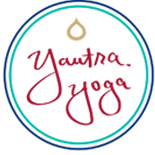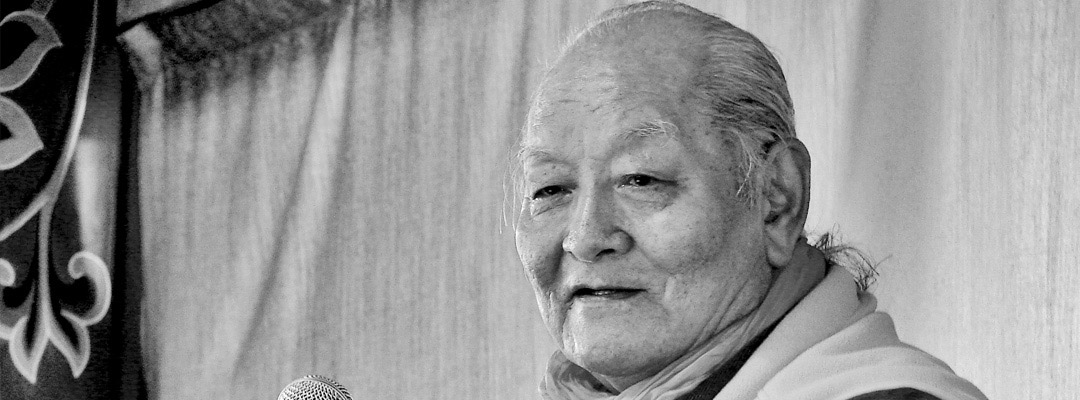[et_pb_section background_color=”#75ceb6″ inner_shadow=”on” fullwidth=”on” transparent_background=”off” parallax=”off” parallax_method=”off”][et_pb_fullwidth_header admin_label=”Fullwidth Header” title=”Chögyal Namkhai Norbu ” background_layout=”dark” text_orientation=”left” module_class=”fullwidth1″ /][/et_pb_section][et_pb_section][et_pb_row][et_pb_column type=”1_2″][et_pb_text admin_label=”Text” background_layout=”light” text_orientation=”left”]
Chögyal Namkhai Norbu was born in Derge, Eastern Tibet, in 1938. He studied and practiced with some of the most important Dzogchen masters of his time and completed the training required by Buddhist tradition in both Sutra and Tantra. At the age of sixteen he met master Rigdzin Changchub Dorje, who introduced him to the authentic knowledge of Dzogchen.
In 1960 he came to Italy at the invitation of Professor Giuseppe Tucci as a staff member of the Institute for Middle and Far Eastern Studies of Rome (today ISIAO). Between 1964 and 1992 he was full Professor of Tibetan and Mongolian Language and Literature at the Oriental Institute of the University of Naples. Chögyal Namkhai Norbu is recognized as a leading authority on Tibetan civilization, particularly in the fields of history, literature, and the medical and astrological sciences.
[/et_pb_text][/et_pb_column][et_pb_column type=”1_2″][et_pb_image admin_label=”Image” src=”/wp-content/uploads/2014/04/chnn.jpg” url_new_window=”off” animation=”off” show_in_lightbox=”off” sticky=”off” /][/et_pb_column][/et_pb_row][et_pb_row][et_pb_column type=”4_4″][et_pb_text admin_label=”Text” background_layout=”light” text_orientation=”left”]
In 1976, Chögyal Namkhai Norbu began to give Dzogchen instruction in the West, first in Italy, then in numerous other countries. He rapidly acquired spiritual authority among many practitioners, and created centers for the study of Dzogchen around the world. Many of the teachings he offers at these centers are now available through the internet in the form of live video webcasts. Chögyal Namkhai Norbu is also widely known for his activities on behalf of the culture and people of Tibet. In 1988, he founded an NGO called A.S.I.A. (Association for International Solidarity in Asia), which operates in Tibet and is dedicated to serving the Tibetan people in the sectors of education, health, training, disaster relief, and sustainable economic development. The following year he additionally founded the International Shang Shung Institute, dedicated to the preservation of Tibetan heritage and culture.
To learn more about Chögyal Namkhai Norbu and the International Dzogchen Community please visit www.dzogchen.net
[/et_pb_text][et_pb_divider admin_label=”Divider” color=”#81d742″ show_divider=”on” height=”2″ /][/et_pb_column][/et_pb_row][et_pb_row][et_pb_column type=”1_3″][et_pb_audio admin_label=”Audio” background_color=”#70d2dd” background_layout=”light” title=”Chögyal Namkhai Norbu – Yantra Yoga Teaching” image_url=”/wp-content/uploads/2014/04/CHNN.jpeg” audio=”/wp-content/uploads/2014/04/CHNN_Yantra_Yoga.mp3″ /][/et_pb_column][et_pb_column type=”2_3″][et_pb_text admin_label=”Text” background_layout=”light” text_orientation=”left”]
Chögyal Namkhai Norbu on Yantra Yoga:
Yantra Yoga, Discovering our Real Condition
(Excerpted from a talk on Yantra Yoga given by Rinpoche in New Delhi India on November 23, 1993*)
I would like to give a little information about Yantra Yoga, a Tibetan tradition. The word Yantra is a Sanskrit word, but it has different meanings in Tibetan. Yantra can mean “geometrical form,” like a mandala, or it can mean “movement of the body.” In Tibetan we say trulkhor, which means “movement.” We use movement to coordinate and guide our prana, or vital energy.
The Yantra Yoga that I teach is called Nyida Khajor. In Tibetan, nyida means “sun and moon” and khajor means “union.” This is the title of the original teaching taught by Vairocana, who was one of the most important students of Guru Padmasambhava, and a great translator.
Vairocana received the transmission of this Yantra Yoga teaching from Guru Padmasambhava, who received it from a great Mahasiddha called Humkara. Then it was transmitted from Vairocana to Yudra Nyingpo, and various other masters. This is the lineage of this teaching.
Besides this text, there is an oral transmission of Yantra Yoga. It is very difficult to understand Yantra Yoga by only reading the original text and not having a teacher. Practitioners of Dzogchen have applied these methods for centuries. I learned them principally from one of my uncles, who was a yogi and an excellent practitioner of Yantra.
In the practice of Yantra Yoga we use our body, voice, and mind. Using the body we perform positions and movements, with the voice we do many pranayama techniques (or breathing practices), and with the mind there are many ways to concentrate and visualize. The aim is to go beyond judging and thinking with our mind, and we call this contemplation. When we apply all three of these aspects together, we have the possibility to arrive at real knowledge, or the understanding of our primordial state — our original condition. That is the real meaning of ‘yoga’ in Yantra Yoga.
*From The Mirror, the international newspaper of the Dzogchen Community of Chögyal Namkhai Norbu Rinpoche, issue 28, Sept/Oct 1994.[/et_pb_text][/et_pb_column][/et_pb_row][/et_pb_section]


